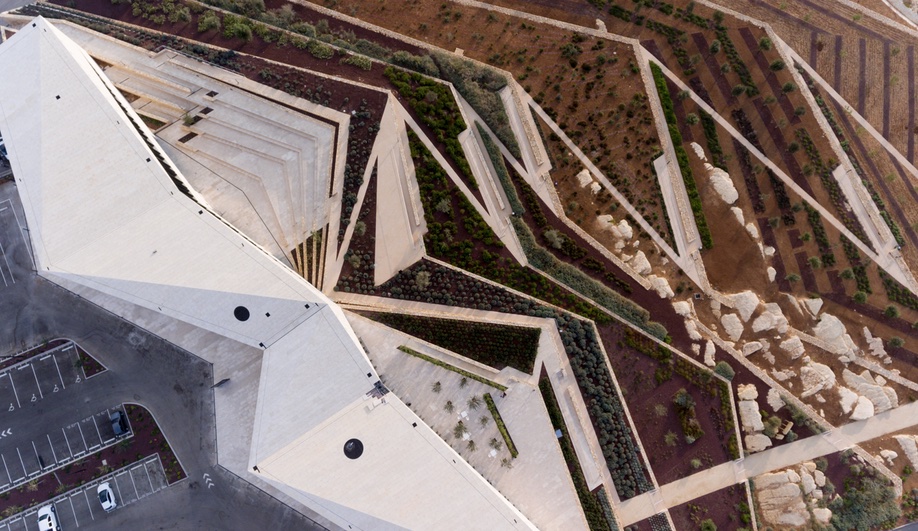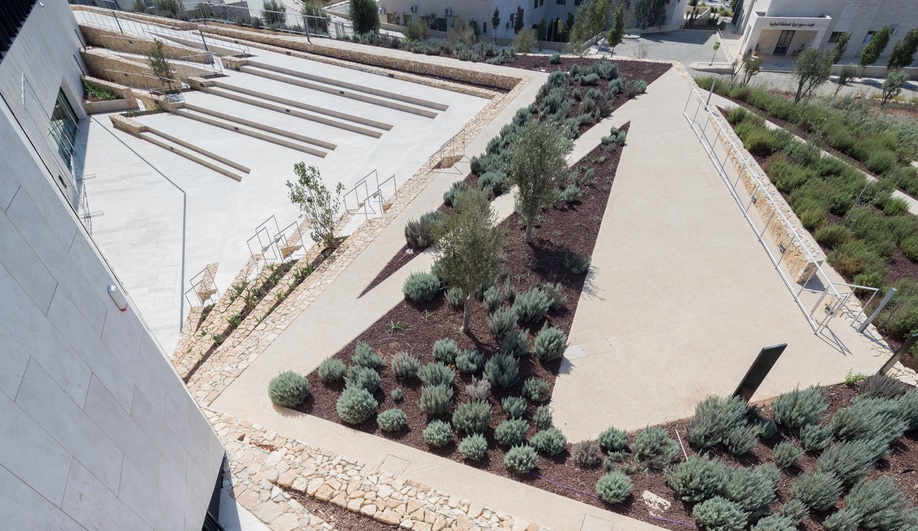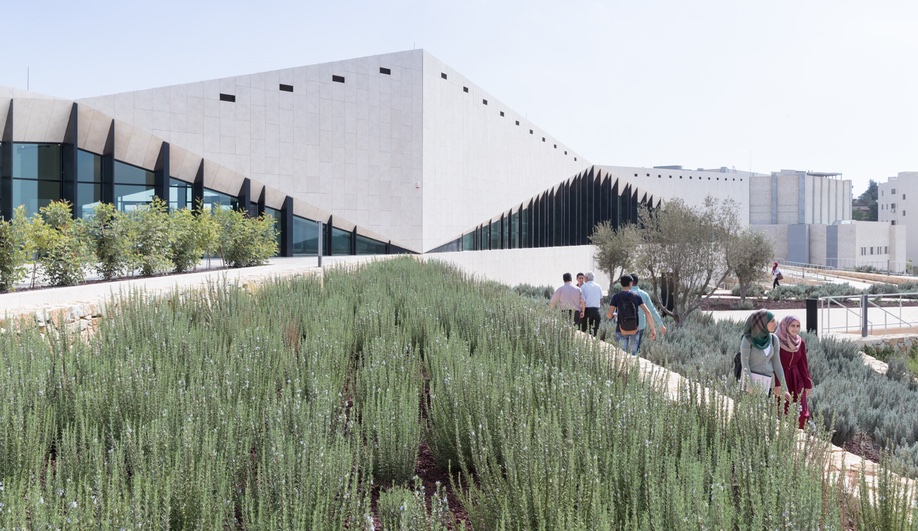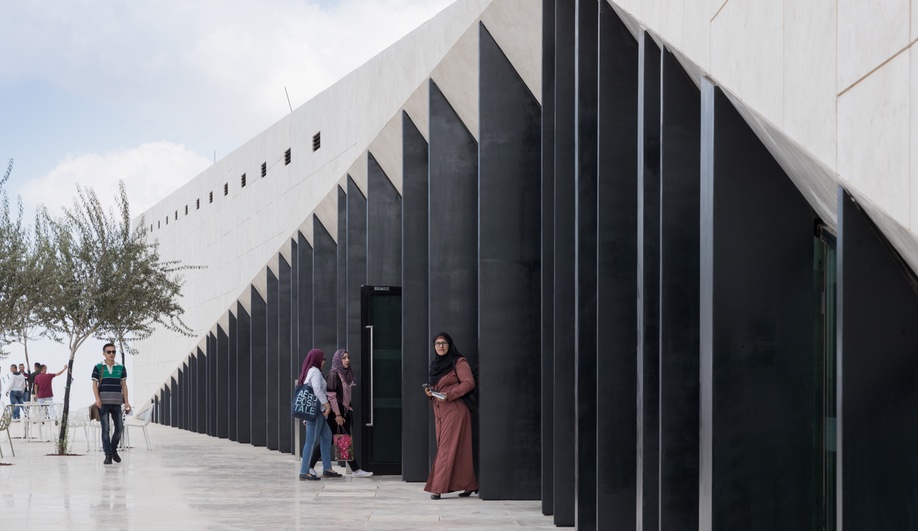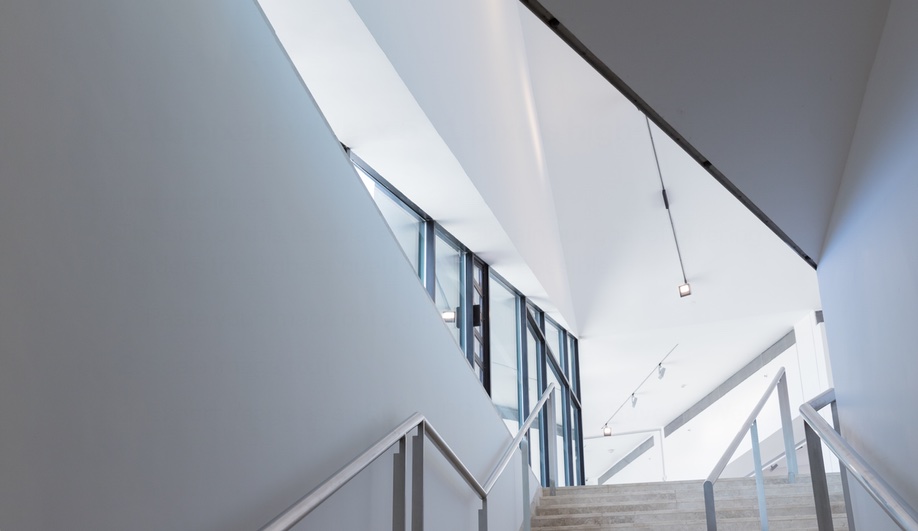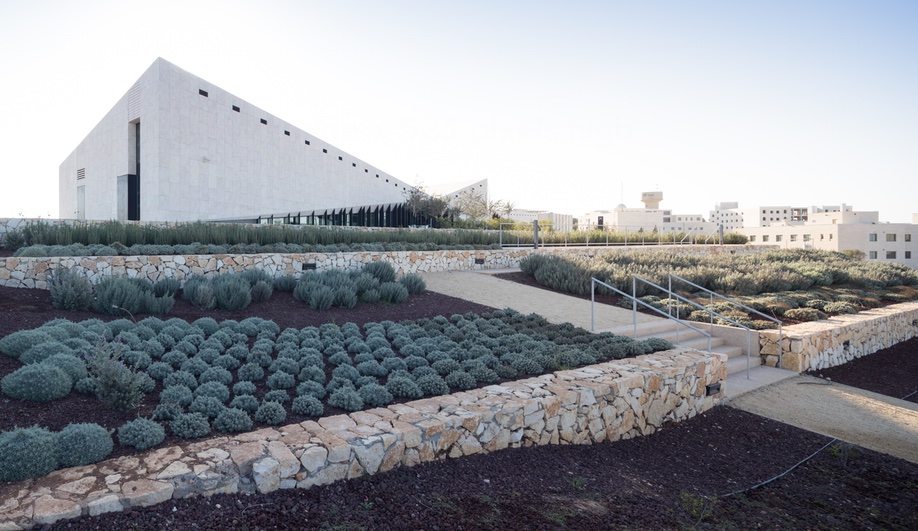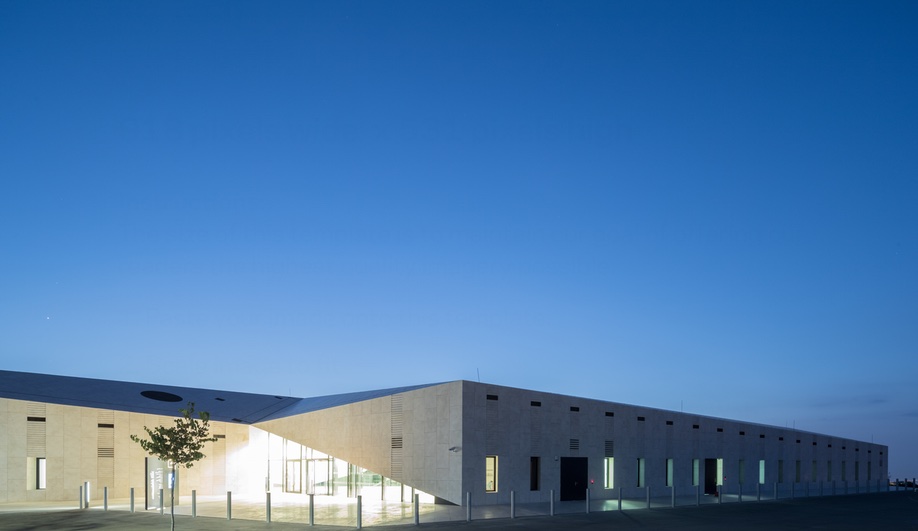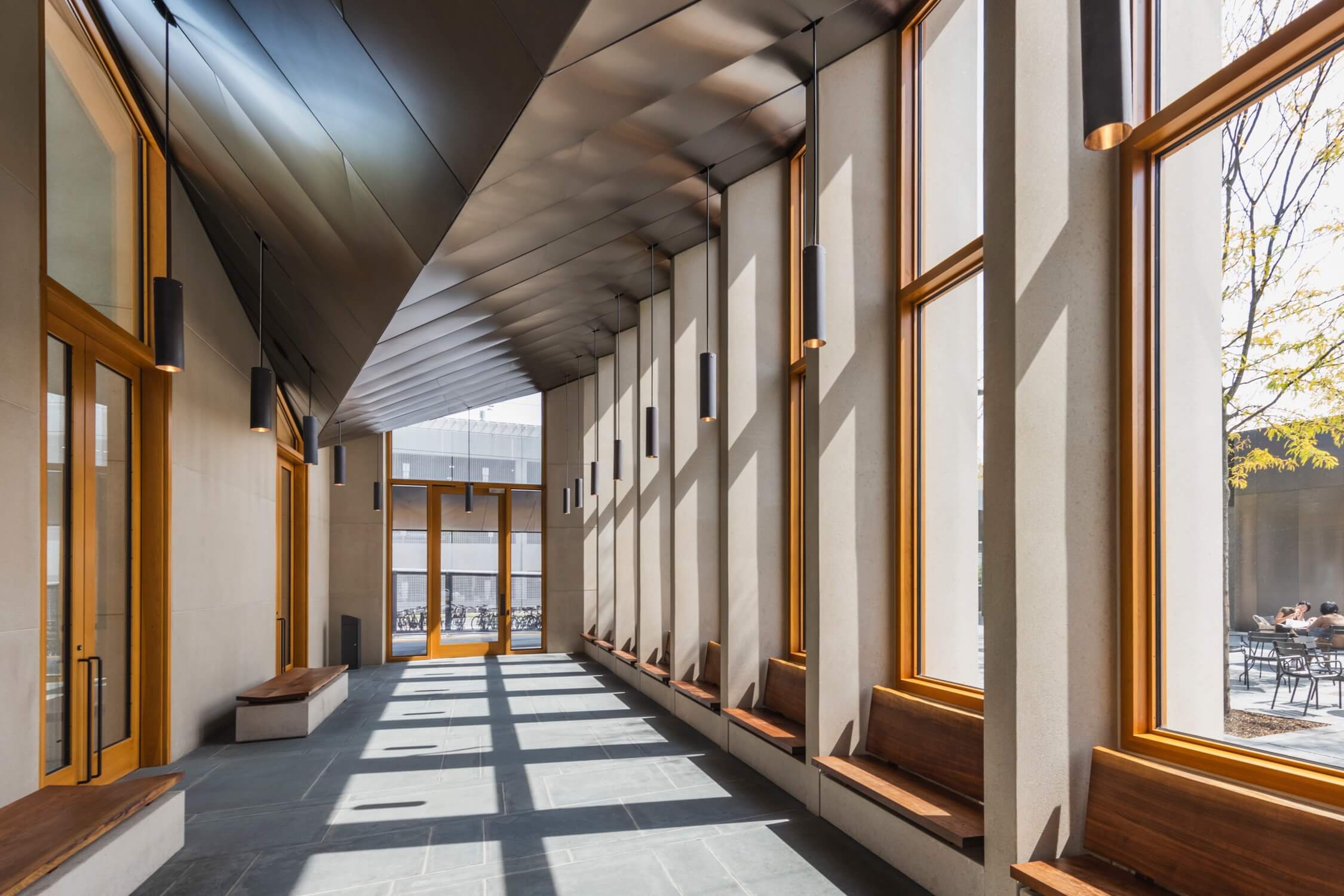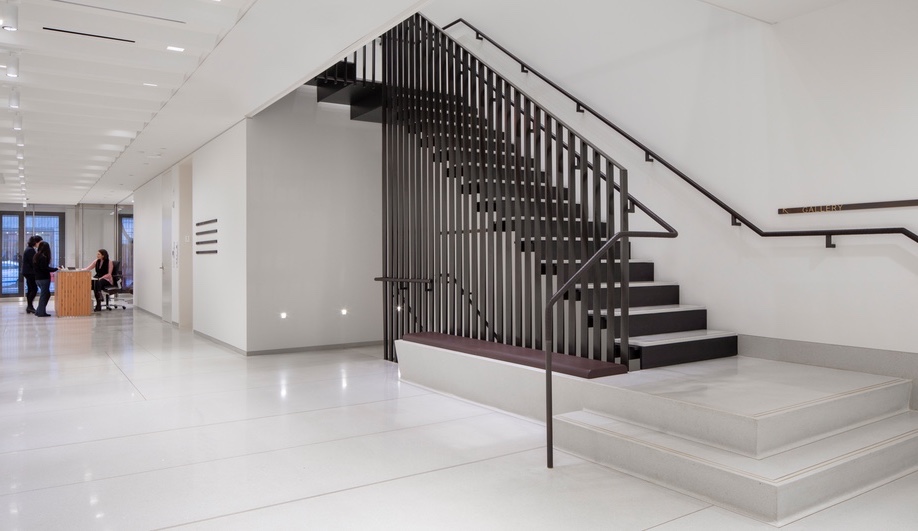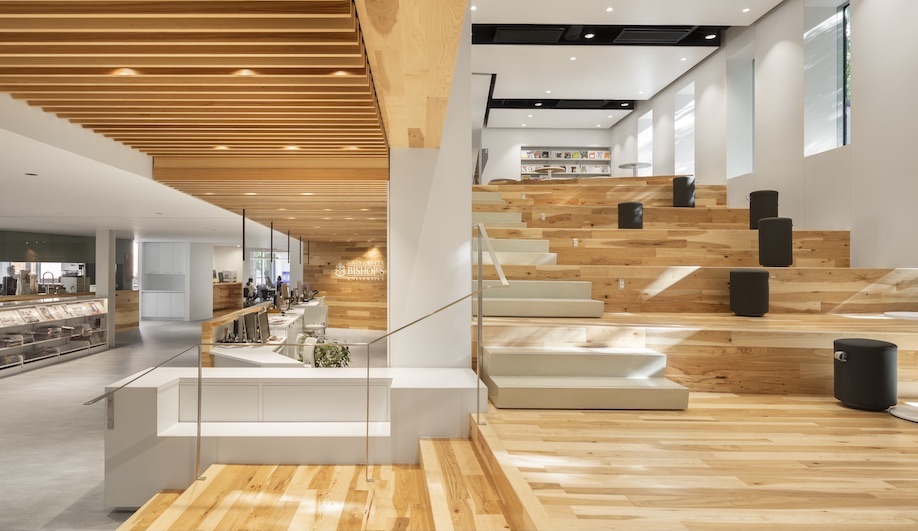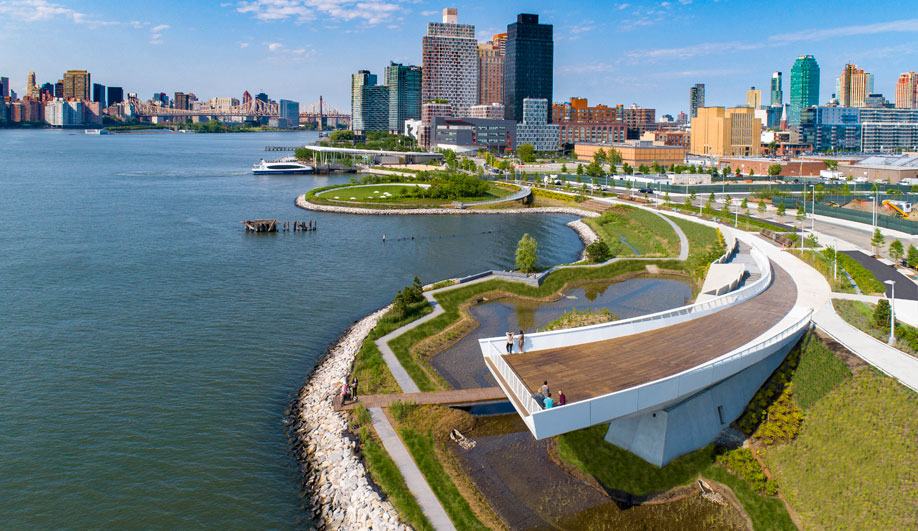Perched atop a hill in the West Bank and surrounded by gardens, the recently opened Palestinian Museum by Heneghan Peng Architects evokes the area’s agricultural traditions.
Slender and sharp, the Palestinian Museum extends along a ridge in Birzeit, a town in the West Bank located some 25 kilometres north of Jerusalem. Its low, uneven profile and triangular form quietly emulate the terraced, hillside gardens zigzagging beneath it. Clad in regional limestone, the building emerges from the stone terraces as if it were a continuation of the landscape.

Inaugurated in May, the monolith presides over four hectares of elaborate gardens. Designed by Jordanian landscape architect Lara Zureikat, the stone terraces cascade over the natural contours of the hill and retrace history; ancient, regional construction techniques were employed to create the garden platforms.

Consisting of a gallery space, outdoor amphitheatre, cafe, library, archive, and classrooms, the 3,500-square-metre building is intended to serve as a cultural hub. Though the museum opened on June 1 without an exhibition – due to an internal disagreement amongst the leadership – the building itself is a stunning artifact. The firm explains, “the mission of the Palestinian Museum is to be the leading, most credible and robust platform for shaping and communicating knowledge about Palestinian history, society and culture.”
In bringing out memories of the land, cultivated for millennia, the design weaves nature and culture into a single gesture. “The approach to the Palestinian Museum is to draw on this history of the terraced landscape, embedding the museum into its immediate site and drawing from this site to tell a larger story of a diverse culture.”

The Palestinian Museum’s mission extends to the contents of its gardens as well — and in great detail. Each of the terraces tells a story, whether by showcasing citrus brought in through historical trade routes or through the full range of herbs and plants native to the region. Almond, apricot, olive, mulberry and pomegranate can all be found in the garden beds.
The project, led by Conor Sreenan, is a fitting expression of Palestinian identity. Overlooking the garden, with stunning vistas of the Mediterranean sea to the west, the site begins and ends with its connection to the land.



